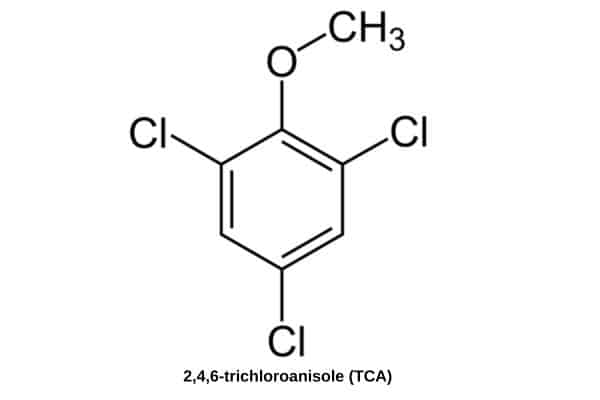This page may contain affiliate links. If you click and buy, we might get a small commission at no cost to you.
Uncorking a bottle of wine can be a fun experience, but what happens when the cork breaks and falls into the wine? Can you drink wine with cork in it? This is a common question among wine enthusiasts, and the answer isn’t always straightforward.
Some wine drinkers might just brush off the cork pieces and keep drinking, but others might worry about the wine’s safety and quality. In this article, we’ll look at the question of whether or not you can drink wine with a cork in it, as well as the risks that might come with doing so.
Can you drink wine with cork in it?
Even if the cork breaks and pieces end up in the bottle of wine, it’s perfectly fine to consume the wine. However, it’s recommended that the drink be poured through a sieve to remove the pieces of cork so that you can continue to enjoy the wine normally without worrying about the crumbles.
Key Takeaways:
- It’s safe to drink wine with cork particles in it just be sure to sieve them out if possible
- Cork taint can happen if you get a cork in your wine, but it is still safe to drink
- As long as you don’t swallow multiple or big pieces of cork, your body will be able to break it down
What happens if the cork gets in the wine?

When a cork gets into a bottle of wine, it can be an unpleasant experience for the person drinking it. The cork pieces can change how the wine tastes and feels, and in some cases, they can cause cork taint.
If the cork has been exposed to dry conditions or heat, it can also break up into the wine. This can give the drink a grainy texture and make it hard to drink. This is more likely to happen with older wines where the cork isn’t stored in places with more humidity that can prevent the cork from breaking down.
What to do if you get cork in wine?
It’s not fun to find a cork in your wine, but it doesn’t automatically mean the bottle is ruined, and there are ways to deal with it.
If you see cork in your wine, stop pouring immediately. Carefully remove the cork from the bottle with a cork puller or corkscrew. Be careful if you don’t want to push the cork deeper into the bottle.
The wine should also be filtered slowly if the cork crumbles and gets into the bottle. Pour the wine through a sieve or cheesecloth to get rid of any cork pieces, sediment, or other debris.
After the wine has been poured out, taste it to see if the cork changed the way it tastes. If the wine tastes good, you can keep drinking it as you normally would. If the wine has an off flavor or smells different, it may be cork tainted, and you can try a different bottle if you don’t want like how it smells or tastes.
Does ingesting a cork piece while drinking wine dangerous?
Ingesting a small piece of cork while drinking wine isn’t considered to be dangerous to a person’s health in most cases. The digestive system of a human being can typically break down small pieces of cork without triggering any adverse effects.
However, it’s essential to keep in mind that swallowing a big chunk of cork or multiple smaller pieces could potentially result in choking or problems with the gastrointestinal system. If this occurs and you start feeling uncomfortable, you should seek medical attention immediately.
What is cork taint?
Cork taint is caused by TCA, a chemical compound that can form in cork and give wines a musty or moldy smell upon opening. So cork taint is typically caused by the cork and is something that is present before you open the bottle, and not necessarily because cork has broken apart in the wine.
This can make the wine smell bad and ruin the whole experience of drinking it. TCA can also make the wine taste like old cardboard or moldy, and it can make the wine less fruity and complex. Even if this happens, you can still drink the wine. Just keep in mind that it won’t taste as good as wine without cork taint.
How can cork taint affect the wine?

Cork taint makes the wine smell bad or moldy, which is one of the things that people notice most. People often compare this smell to that of wet cardboard or a damp basement.
It can be very strong and completely cover up any other smells in the wine. This can change the taste of wine in many different ways, depending on how much TCA is in the wine.
In some cases, the flavor of the wine may be very mild, with little or no fruitiness or complexity. In other cases, the wine may have a dry, bitter aftertaste, and the different tastes may not be in balance.
It’s important to remember that while cork is usually the cause, it isn’t always the only cause of cork taint. TCA can also be found in other materials used to make wine, like barrels where the drink is stored.
Cork taint’s effect on people

Cork taint doesn’t pose any health risks to people. This is caused by a chemical called 2,4,6-trichloroanisole (TCA), which isn’t known to be harmful to people. Some people might not like the bad smell, but that doesn’t mean it’s dangerous or even poisonous to them.
Conclusion
Even though it’s upsetting to discover a cork fragment in your wine, that doesn’t mean it’s spoiled or unsafe to drink. However, in order to get the most out of your wine-drinking experience, you should strain the liquid through a fine mesh sieve or cheesecloth before drinking it.
This will catch any bits of cork that might be floating in the liquid. Cork particles in wine are a common problem, but contrary to popular belief, they don’t present a serious danger to one’s health and tend to be simple to eliminate.



